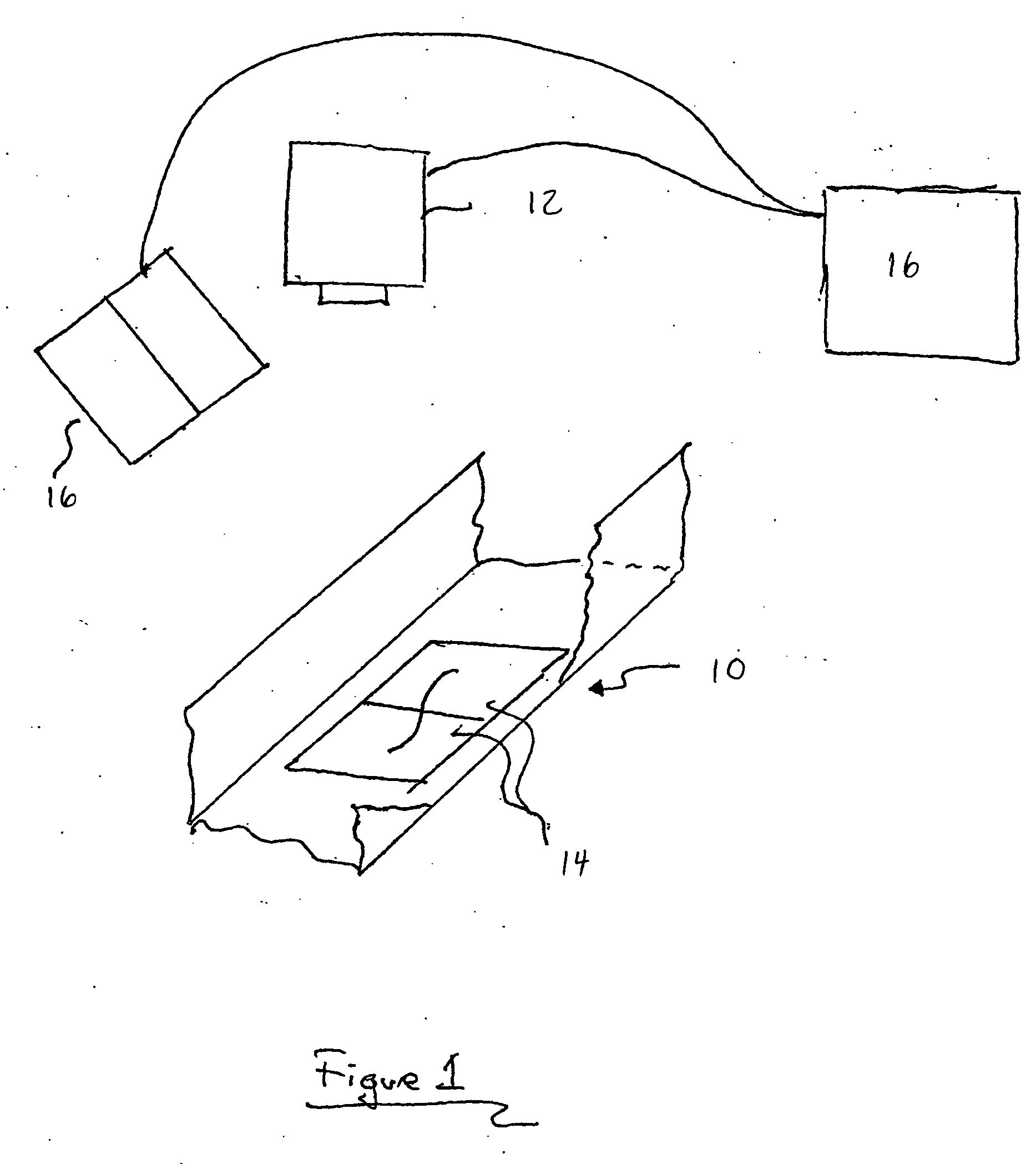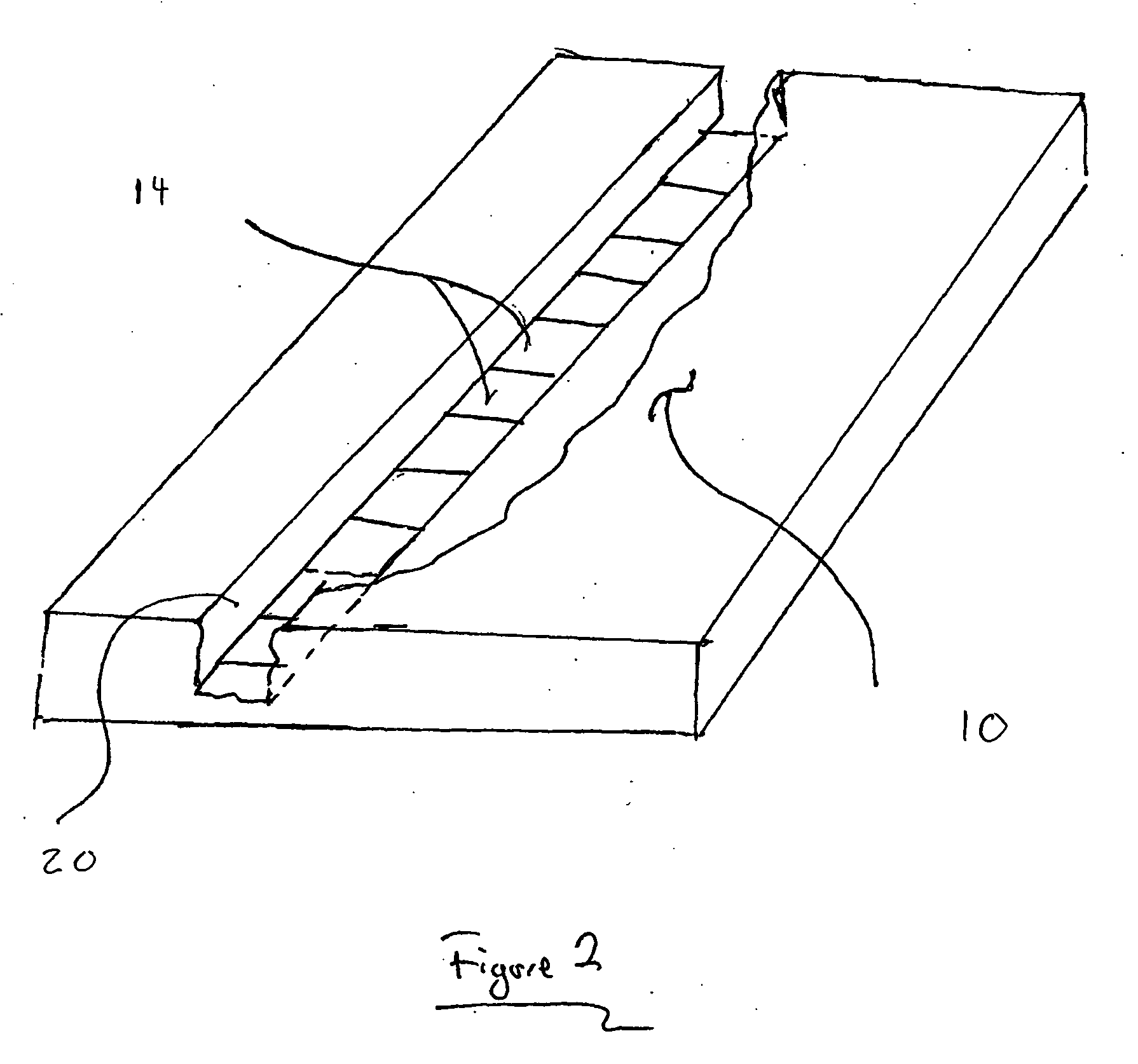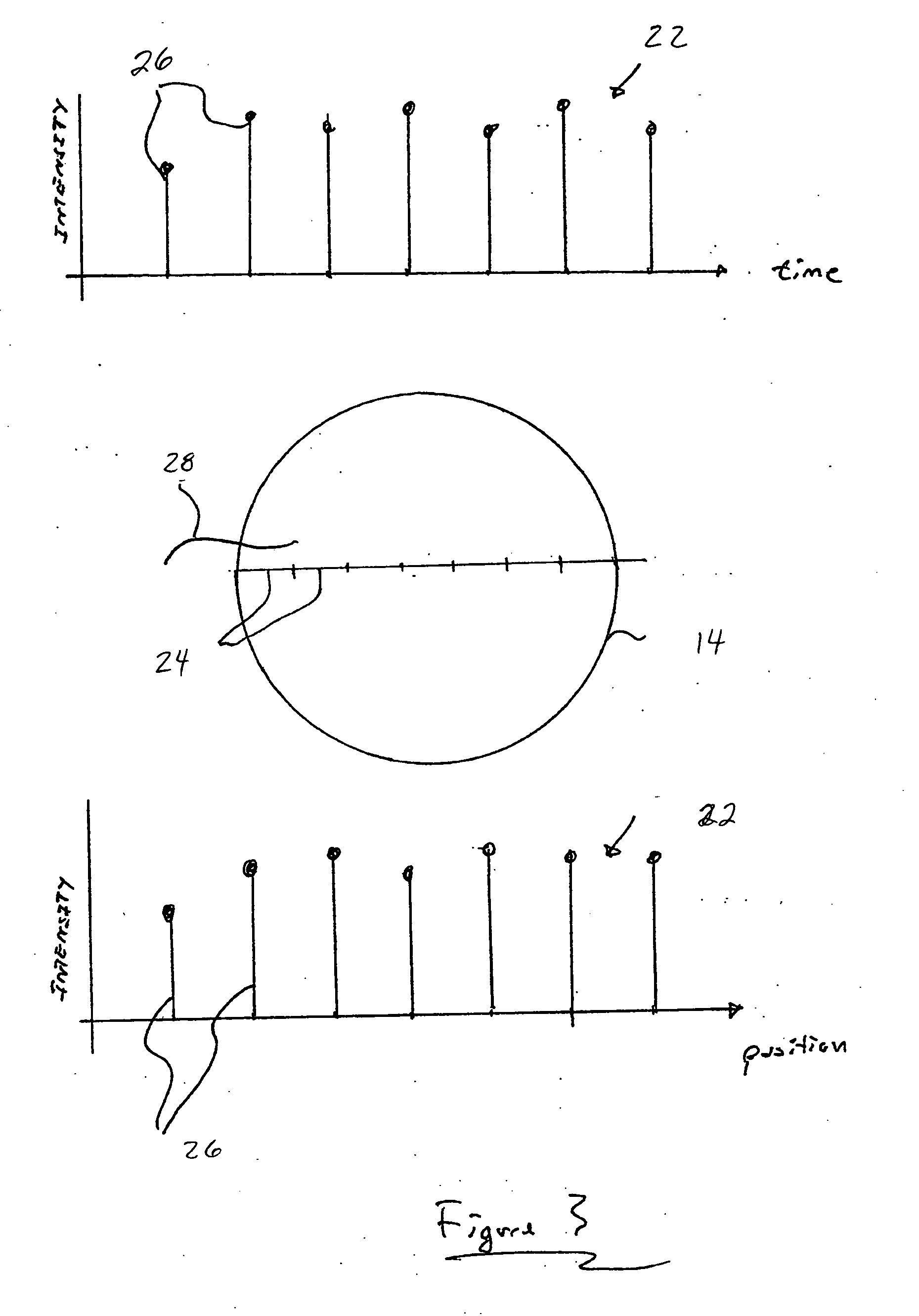Linear analysis of polymers
a polymer and linear analysis technology, applied in the field of linear analysis of polymer sequence information, can solve the problems of preventing proper analysis of polymer, affecting the accuracy of polymer analysis, and the emission of a probe may not be strong enough with respect to the system noise level, so as to increase the efficiency of polymer sequence analysis, increase the amount of useful data, and increase the amount of information
- Summary
- Abstract
- Description
- Claims
- Application Information
AI Technical Summary
Benefits of technology
Problems solved by technology
Method used
Image
Examples
Embodiment Construction
[0055] The methods and apparatuses of the present invention may be used to derive a greater amount of information from a polymer during linear analysis, particularly increasing the amount of information obtained per run, and / or per sample. In some embodiments, the additional information that is collected can increase the signal-to-noise ratio of systems used to analyze the polymer. In other embodiments, the additional information that is collected can more accurately define the position of features of the polymer by increasing an effective sampling rate of a signal used in analysis. These improvements may allow linear analysis to be performed with a greater degree of certainty, in a shorter time, and / or with a reduced number of polymers.
[0056] Some aspects of the present invention relate, in part, to a detection system having multiple detection zones that may each accept a labeled polymer, and a detector for detecting emissions from the detection zones as the polymer passes there t...
PUM
| Property | Measurement | Unit |
|---|---|---|
| area | aaaaa | aaaaa |
| distance | aaaaa | aaaaa |
| velocity | aaaaa | aaaaa |
Abstract
Description
Claims
Application Information
 Login to View More
Login to View More - R&D
- Intellectual Property
- Life Sciences
- Materials
- Tech Scout
- Unparalleled Data Quality
- Higher Quality Content
- 60% Fewer Hallucinations
Browse by: Latest US Patents, China's latest patents, Technical Efficacy Thesaurus, Application Domain, Technology Topic, Popular Technical Reports.
© 2025 PatSnap. All rights reserved.Legal|Privacy policy|Modern Slavery Act Transparency Statement|Sitemap|About US| Contact US: help@patsnap.com



